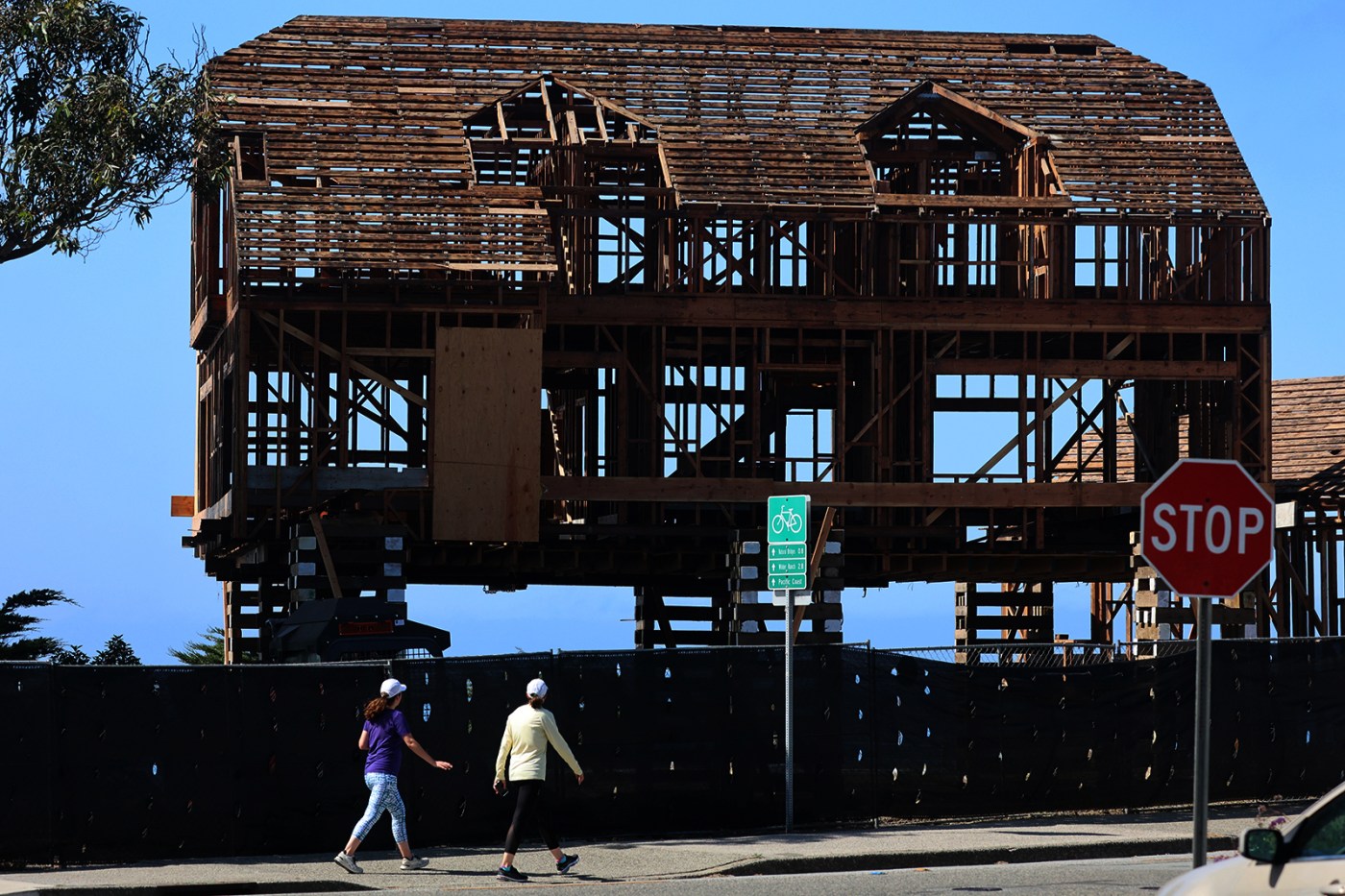SANTA CRUZ — It has happened. Again.
For the second year in a row, a housing report has ranked Santa Cruz as the most expensive metropolitan county in the nation for renters.
According to the annual National Low Income Housing Coalition’s “Out of Reach” report, released Thursday, a worker living in the Santa Cruz-Watsonville metropolitan district would need to earn an hourly wage of $77.96 to afford a two- bedroom rental at a fair market rate.
Put another way, a local renter earning the state’s minimum wage at $16 per hour would need to work 4.9 full-time jobs to afford a two-bedroom unit within the region’s fair market rate of $4,054 per month, according to the report.
“This news, while disheartening, is not a surprise,” Elaine Johnson, executive director of Housing Santa Cruz County, said in a release in response to the report. “The numbers in these reports demonstrate why we must continue to prioritize housing solutions to make progress for our communities.”
The troubling figure was arrived at through what the coalition calls the “housing wage” — an estimation of the hourly wage full-time workers must earn to afford a rental home at fair market value without spending more than 30% of their income. Spending no more than 30% of gross income for a rental meets the definition of “affordable,” according to state housing authorities.
This year’s housing wage in Santa Cruz also outpaced by almost $15 its own high-water mark set last year at $63.33, which was also enough to earn the 2023 report’s top spot. When the county ranked second in 2022, this same figure was $60.35.
The runner-up in this year’s report is the San Francisco metropolitan area with a $64.60 housing wage. Of the top 10 high-cost areas nationwide, California jurisdictions held eight of those spots and, based on the same equation, took home the title of the most expensive state in the country.
Related Articles
Half Moon Bay residents appealed approval of senior farmworker housing. Here’s what the City Council just decided
After state warning, Concord reverses decision to halt downtown affordable housing project
California home prices hit another record high at $908,040
Bay Area voters to decide on $20 billion affordable housing bond in November
Livermore residents may not get to vote on controversial downtown housing project
Taken from an even more local lens, the report continues to paint a concerning picture. Using data from 2018-2021, the report highlighted that renters make up about 40%, or 38,635, of the county’s total households. The estimated hourly mean wage for those renters is $22.18, meaning these workers would still need to hold 3.5 full-time jobs to afford a two-bedroom rental.
“Santa Cruz County lives at the top of many lists – natural beauty, outdoor recreation, farm country, rich cultural history and diversity, and many other aspects we are delighted to honor,” continued Johnson. “Housing unaffordability shouldn’t be a list we’re comfortable sitting at the top of. We can change this, and we must, to make sure our county’s working families, low-income seniors, our neighbors and our loved ones get to remain housed here.”
The report comes about six months after all five local county jurisdictions went through the arduous process of updating their housing elements. The update, which happens every eight years, includes housing plan requirements passed down by state authorities to ensure that local governments are keeping pace with the needs of residents.
Altogether, the five-county governments had to plan for the construction of about 13,000 units from 2023-2031, a total that far exceeded the previous cycle, which several local jurisdictions still failed to meet.
The housing report also comes days after the county released a report of its own that is adjacent to the coalition’s. The county’s 2024 State of the Workforce helped contextualize the potential impacts of soaring local prices. The county’s Workforce Development Board found that from 2022-2023 the local population declined by 2,300 which, according to the Housing Santa Cruz County, suggests local workers, families and seniors on fixed incomes can no longer afford to live here.
At the same time, the workforce report also revealed that the county experienced a 5.7% growth in employment from 2020-2023, but that figure still lags behind the pace of neighboring counties such as San Luis Obispo, at 9%, and the state as a whole, at 8.4%.
“We see signs of optimism in emerging sectors, but this report highlights some of the challenges our workforce faces when it comes to job quality and their ability to live and raise families locally,” Santa Cruz County Workforce Development Board Director Andy Stone said in a county release. “Declining population numbers should serve as a call to action to address these challenges head-on.”
Housing wage rankings
No. 1: Santa Cruz-Watsonville metropolitan area — $77.96
No. 2: San Francisco metropolitan area — $64.60
No. 3: San Jose-Sunnyvale-Santa Clara metropolitan area — $60.23
Source: 2024 “Out of Reach” report.












